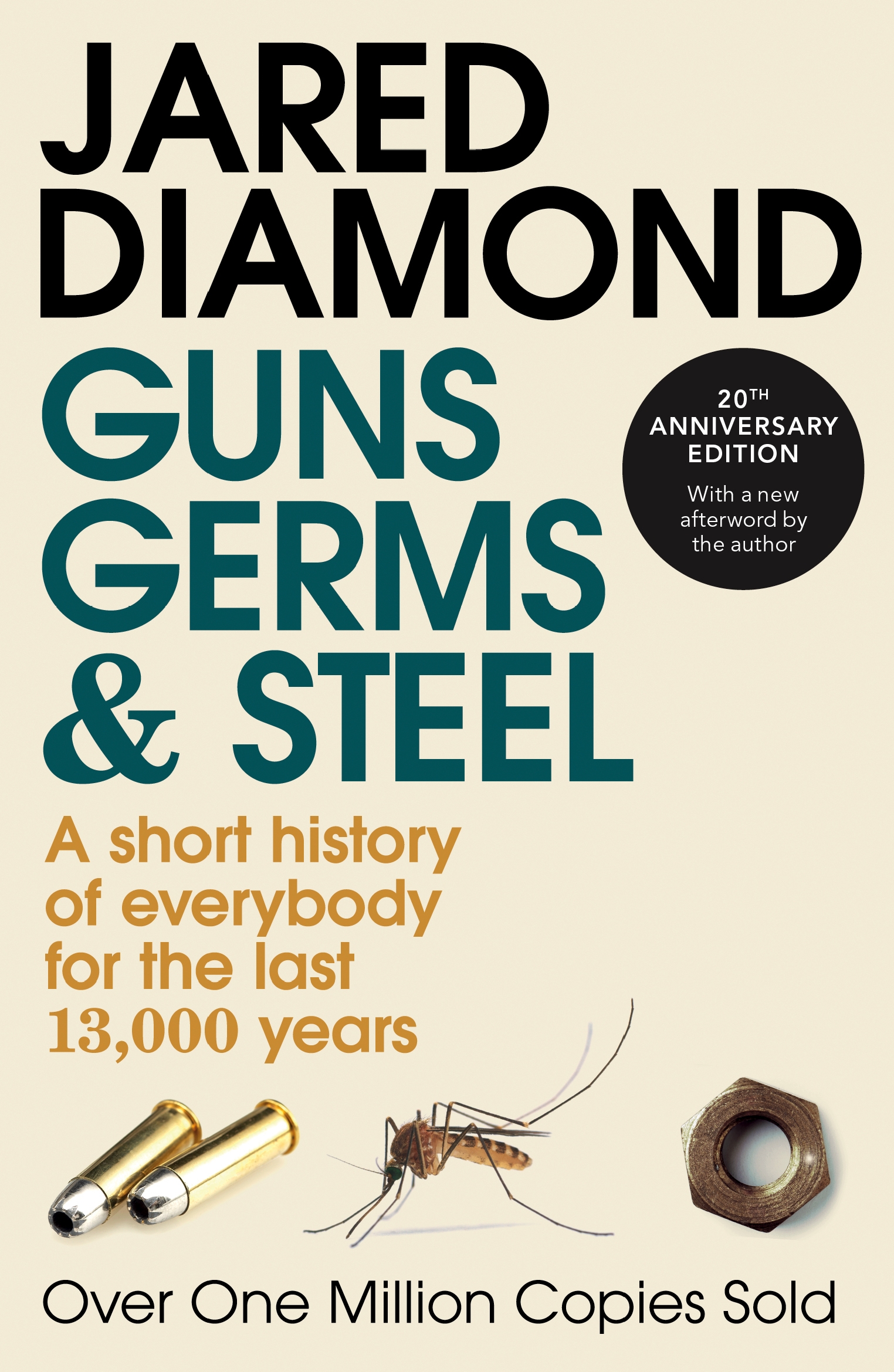
Students of ecology must become aware of the impact of our human footprint on nature, and Diamond’s book provides an excellent avenue to explore that footprint. Race, Diamond drives home again, was and is irrelevant. He links this agricultural conquest to both human migration and geography, showing that inevitably, the cultures with food-production technology and the means to protect it were ultimately politically and culturally victorious. Peoples who, by accident of their geographic location, inherited or developed food production thereby became able to engulf geographically less endowed people” (p.386).

Diamond provides the answers to this puzzle through analysis of the history of African languages and connecting those evidences to his previous lessons and to his theories (let us not forget) that cultures (Bantu in central and southern Africa) that solved problems of domesticated food production also produced “…germs, technology, political organization, and other ingredients of power. Perhaps because I teach at Historically Black Colleges and Universities (HBCU), I was especially intrigued by the last chapter in the book-‘How Africa Became Black’.

The author is talking with us, not to us, and the reader has a sense of two-way conversation where we are expected to think our way through gaps in the story, rather than be led by an all-knowing seer. Diamond thus provides an example of evolutionary mechanisms that we can relate to and readily understand. This is the kind of teaching that students at many levels-including scientists-can learn much from. Many of our ‘symptoms’ of disease actually represent ways in which some damned clever microbe modifies our bodies or our behavior such that we become enlisted to spread microbes” (p. That number depends on how long each victim remains capable of infecting new victims and how efficiently the microbe is transferred from one victim to the next….The germ that spreads better leaves more babies and ends up favored by natural selection. For a microbe, spread may be defined mathematically as the number of new victims infected per each original patient.

Evolution selects for those individuals most effective at producing babies and at helping them spread to suitable places to live. Diamond states, “Basically, microbes evolve like other species. His exquisite teaching is well demonstrated in his discussion of “The Lethal Gift of Livestock”. Diamond teaches us about the processes by providing examples in which he outlines the forces at play and lets us fill in the gaps. artificial selection) and naturally, is discussed clearly at numerous places throughout the book. The role of evolution, both culturally (e.g.


 0 kommentar(er)
0 kommentar(er)
